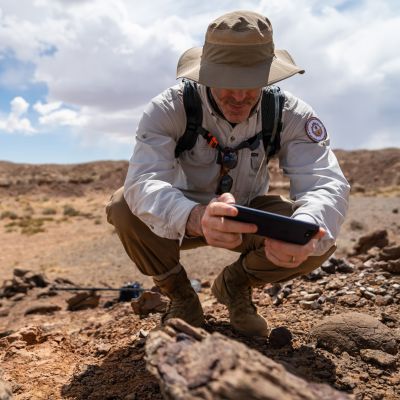When I was able to walk again after my recovery, the first thing I did was return to Thailand with my sister and my friend, and we went to see what we could do. We visited shelters, hospitals and temporary schools. In one of the temporary schools there were children who’d lost their entire families, they had no one, no homes. They slept on the cement floors of the temporary school. They didn’t look up at you — they looked through you, with a look of hopelessness, like they’d given up on life. Seeing those children and knowing that unlike on the day of the tsunami I could do something to help, I knew I had to.
So I began researching. I discovered that when first responders to a disaster leave, children in communities are often forgotten, and through time I learned that children are waiting for two, four, six or more years for their new school to be built, and were still studying at temporary schools where the maximum is supposed to be one year. They were studying in absolutely unsafe, unhealthy conditions. People often think that the donations to disaster relief will help rebuild schools, homes and hospitals, which is not the case unfortunately — often the funds help first responders with lifesaving, but then there’s a huge lack of sustained response.
Researching what I could do that would create the biggest impact, it became clear that rebuilding schools that are disaster-proof could have an incredible effect on so many levels. Children can go back to a sense of normalcy and begin to recover from their trauma. A good-quality school provides education opportunities and certainly a better job placement when they finish their schooling. The Happy Hearts schools have their own computer labs, which already gives them another advantage point. The schools double as a community centre and because it’s a disaster-proof school it’s also a shelter in the case of another natural disaster. Word gets out to other communities that there is a safe school, providing a good education, and there are computer labs, which creates a movement where other families from other communities start moving into this community because they want the best for their children. And that starts creating a more vibrant community, with a more vibrant economy, and emerging from extreme poverty the community starts thriving. So building good-quality schools serves the anti-poverty model as well. The impact is manifold and far reaching. That’s why we chose to focus on building schools in places affected by disaster and poverty — such as Indonesia, Haiti, Mexico and Peru — during the vital five- to six-year period after first responders leave.
Some of my dear friends are supporters of Happy Hearts. Many of them, through working hard, are now privileged and have been able to take care of their family, and probably many future generations of their family. When they come and visit a Happy Hearts school, see first hand the compassion of the teachers and the community, and this incredible power of the human spirit, it can make life for them so much more meaningful and so much more worth living. It makes an enormous impact when they bring their own children to see how some of the other children in the world live. Their children come to understand the whole spectrum of life and of the world. It will help shape them into different human beings.
It’s a beautiful thing when these two worlds connect: there is a happiness created on both sides, and that’s one of the reasons why I made the name Happy Hearts Fund, because when you help someone, you make their heart happy — and, at the same time, you make your own heart happy.
Bridging these worlds, betters both sides.
To donate to Happy Hearts Fund, learn more about its work and how you can contribute or help, visit: www.happyheartsfund.org









